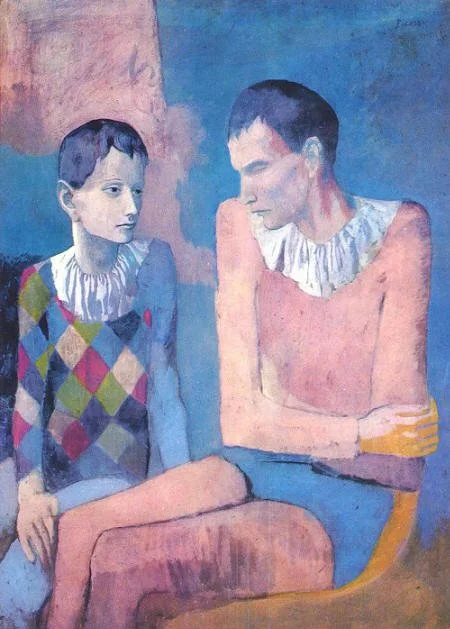The life of Pablo Picasso

Already during the life of Pablo Picasso, he was one of the best known Spanish artists and Picasso is seen as the inventor of Cubism. Picasso was born in Málaga in 1881 and died in France in 1973. In those 91 years he experienced the two world wars, a Spanish civil war and the Franco regime. Picasso's paintings have many styles, which can be linked to the events in his life. Picasso: "If you want to understand my work, you need to know what happened in my life at that time."
Young talent
People were already impressed by Picasso's talent at the age of 13. He had to draw a torso for his entrance exam at the Academy of Fine Arts in Barcelona. He was given a month to do this, but Picasso was ready in one day. He was immediately admitted and skipped the first two years. When Picasso was 15 years old, his work was first exhibited: his Science and Charity was exhibited in the Palace of Art and Industry in Madrid. A nun, a child and a doctor at the bedside of a dying person fall back on the death of Picasso's sister Conchita.

Paris
Together with his friend Casagemas, Picasso went on a train journey to Paris, where a new milestone awaited him: at the age of 19, his work The Last Moments During The World Exhibition of 1900 was exhibited. His friend Casagemas fell in love with dancer Germaine Gargallo in the city of lights. However, the friends had to go to Madrid again due to money problems. After a while, Casagemas returned to Paris. Germaine, however, rejected him, after which Casagemas committed suicide. This was the start of Picasso's blue period. From 1901 to 1904 he had a depression; it was a time when he painted in gloomy colors (mostly blue). He lived in poverty and always traveled between Barcelona and Paris. In 1904 he decided to move permanently to Paris.
From blue to pink
Picasso became more and more famous and got several successes, also in love; he got into a relationship (after which many more followed) with Fernande Olivier. His blue period was over and the pink period began. Picasso's works became less gloomy; they consisted of softer shades of blue and lots of pink. In addition, Picasso was inspired by the circus during this time, which he often visited with Fernande.

Cubism foundation
Picasso was inspired by primitive African masks and sculptures that he saw during his visit to the Museum of African Arts in Paris. Paul Gauguin and Henri Rousseau, two artists who admired Picasso, also used African art as a source of inspiration. Picasso then depicted masks and totem figures on his paintings and worked on new techniques with a more geometric style. In this way, he and Georges Braque managed to lay the ground for cubism. An important work from this period is Picasso's Les Demoiselles d'Avignon. Five prostitutes are staring at the viewer. With their oddly shaped bodies, they do not look particularly attractive, nor do the fruit that is visible in the foreground.

On the way to abstraction
Picasso became depressed again during the First World War. In Rome he started designing sets and costumes for the Russian ballet company Les Ballets Russes. He married a member of the company, who introduced him to the higher circles. This is how Picasso began to delve into classical art. Since the arrival of surrealism in Europe, Picasso has been influenced by this. He started experimenting again with styles, colors and shapes. Eventually his work increasingly focused on abstraction. For example, look at Guernica; that shows the German bombing of the city of Guernica during the Spanish Civil War. Guernica is also the best known painting that Picasso has made.

Het leven van ... serie
1. Het leven van Leonardo Da Vinci
2. Het leven van Rembrandt van Rijn
3. Het leven van Vincent van Gogh
Image header: Pablo Picasso, Barcelona Rooftops, 1903, © Museu Picasso, Barcelona
Relevant: A Complete list of the Top 100 Contemporary Artists


